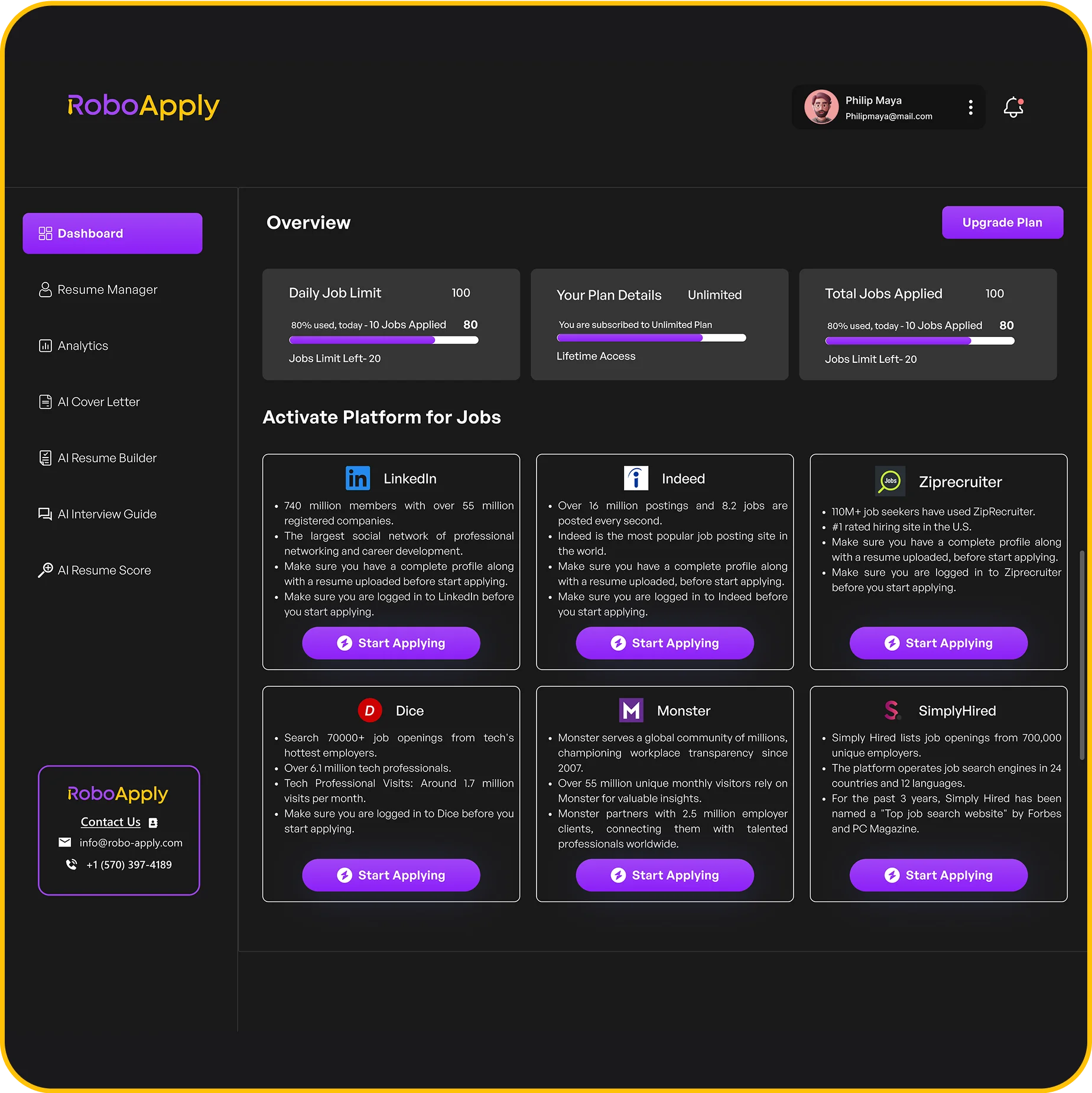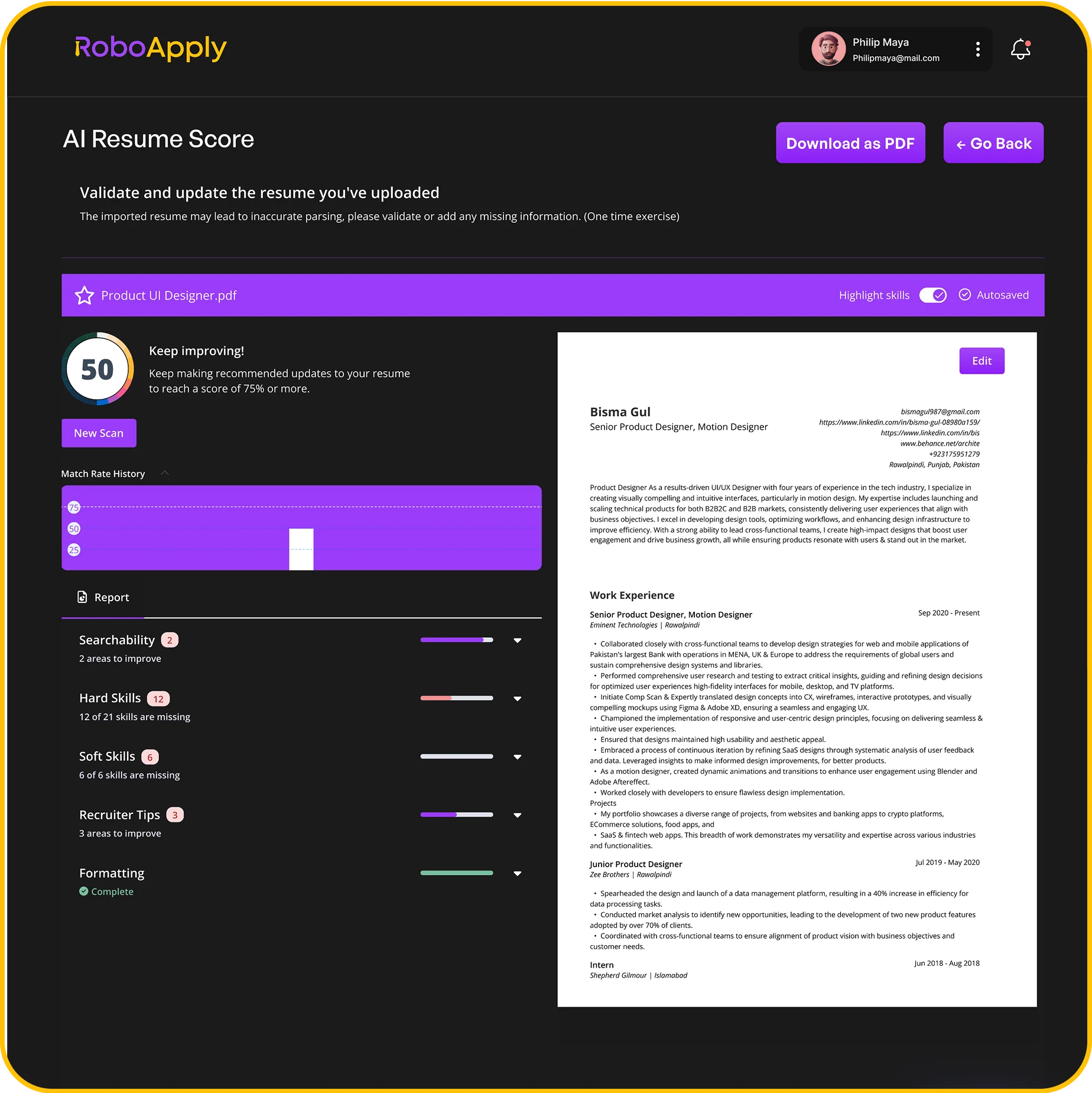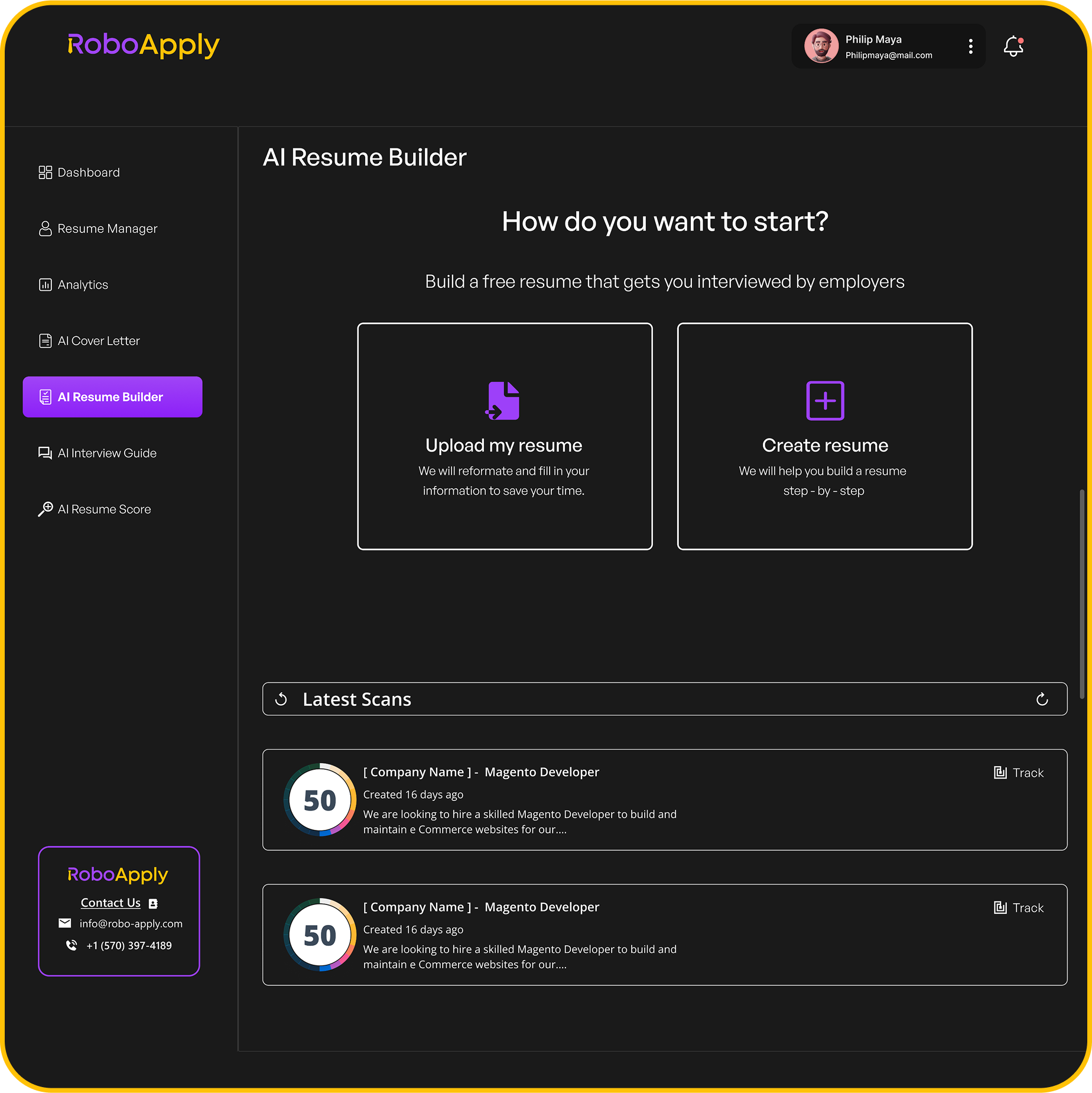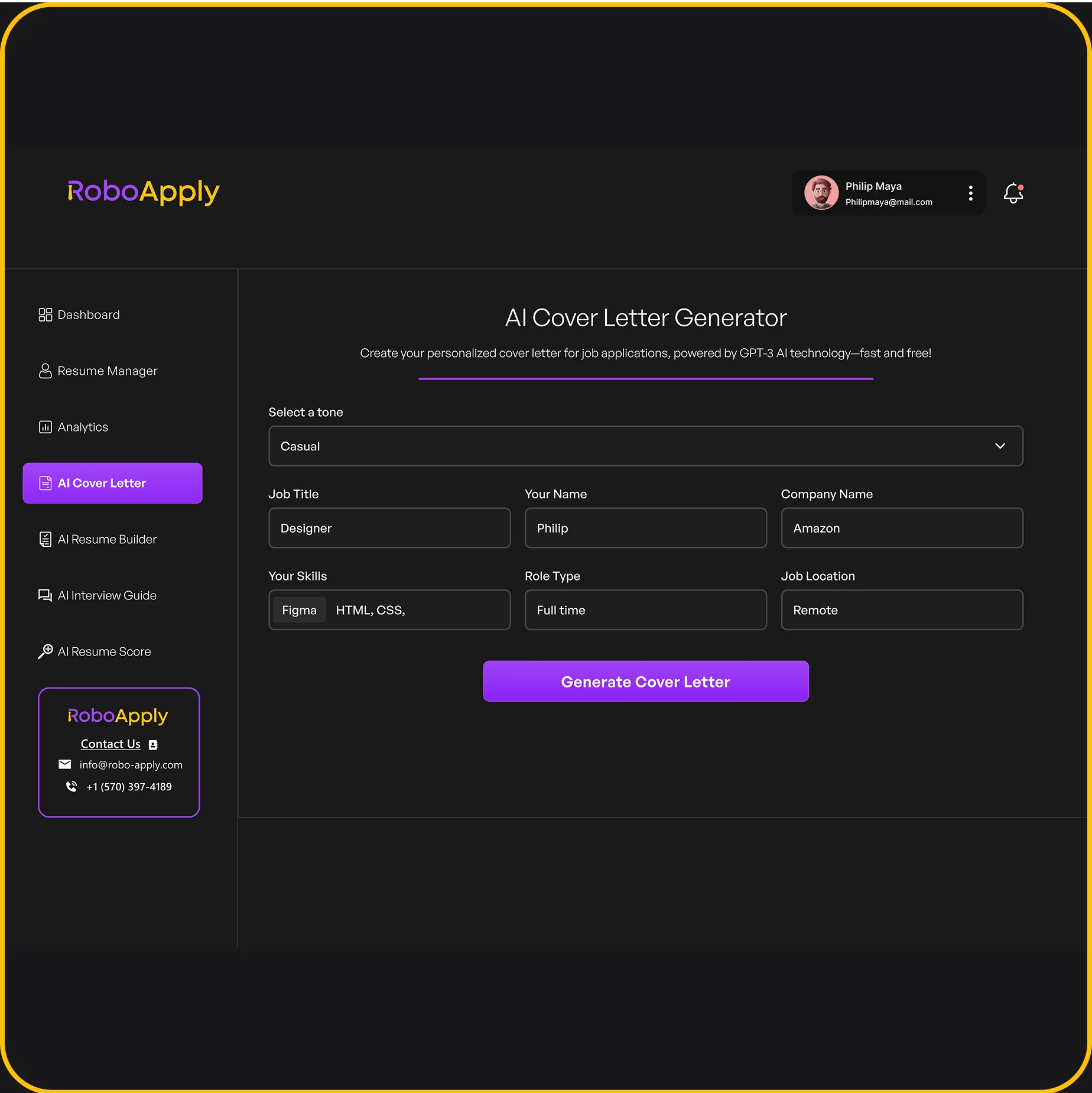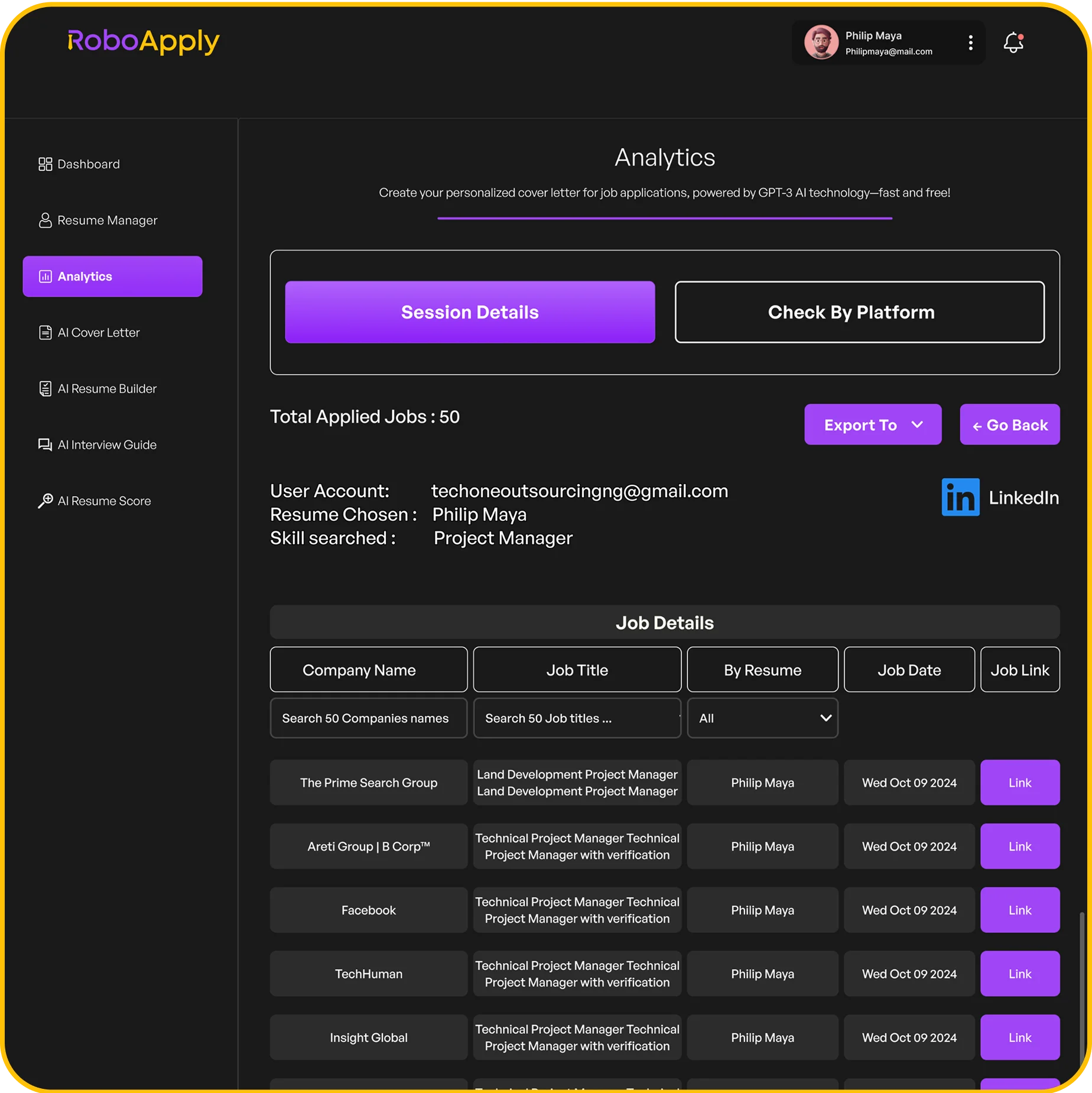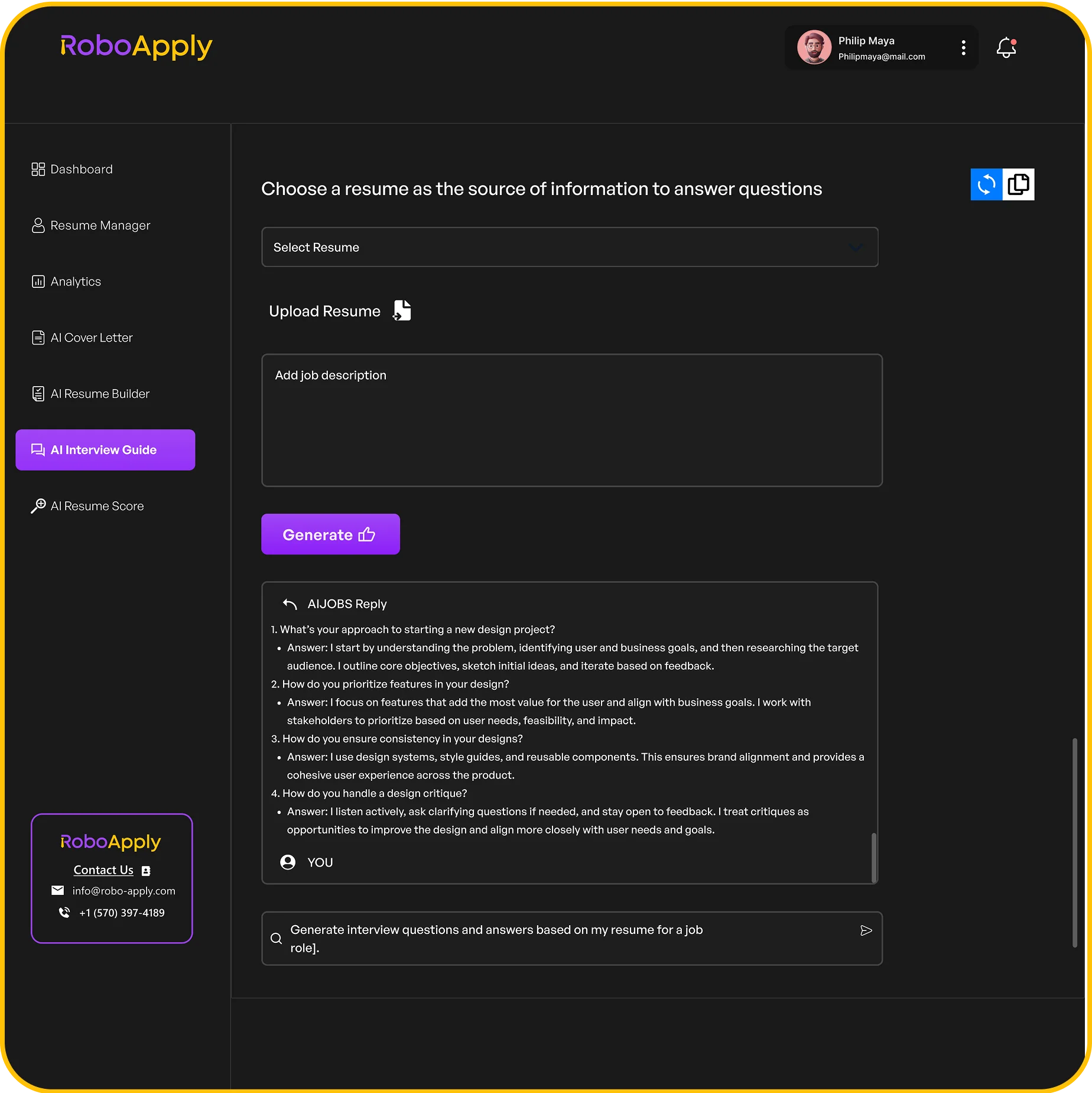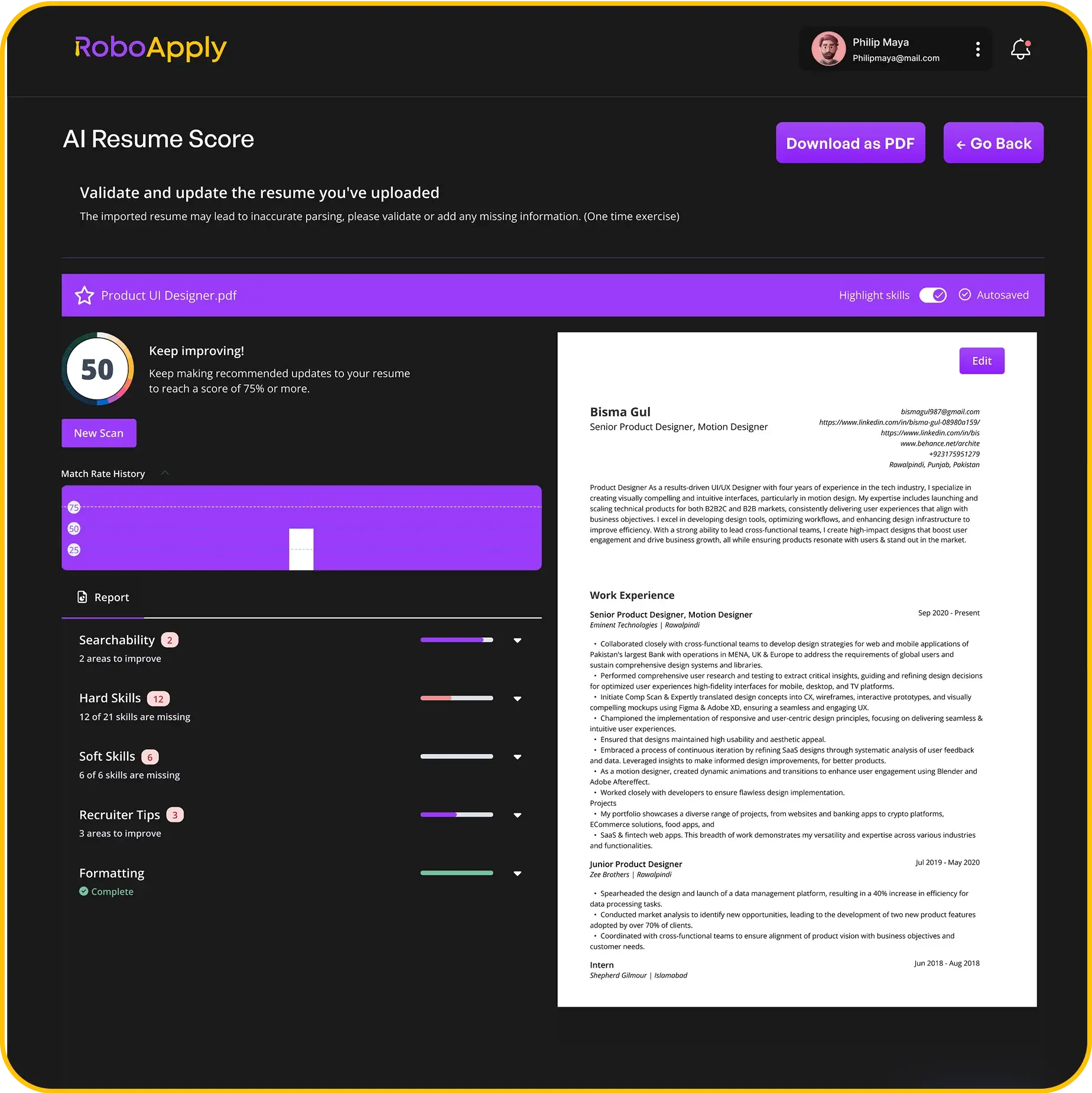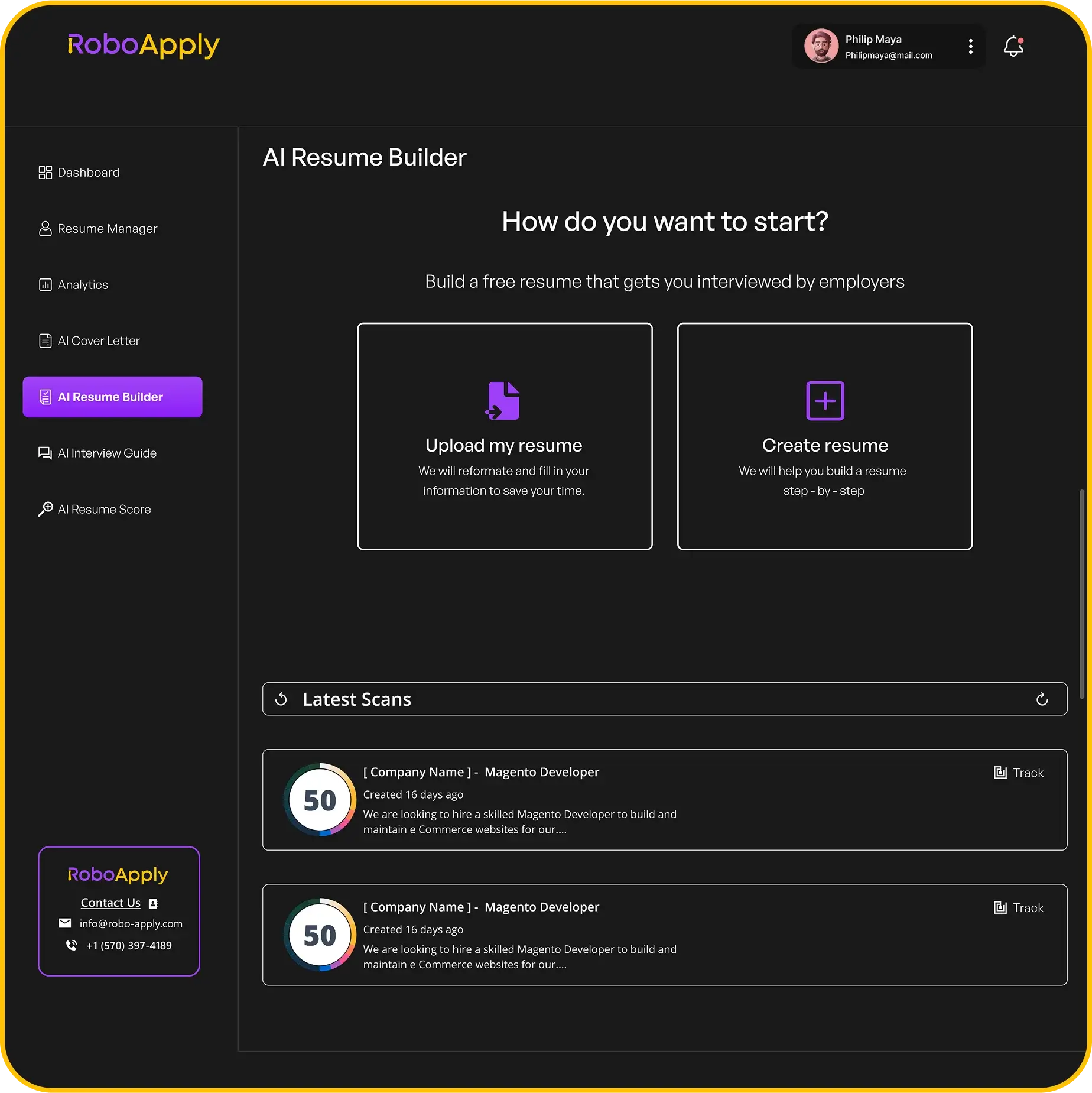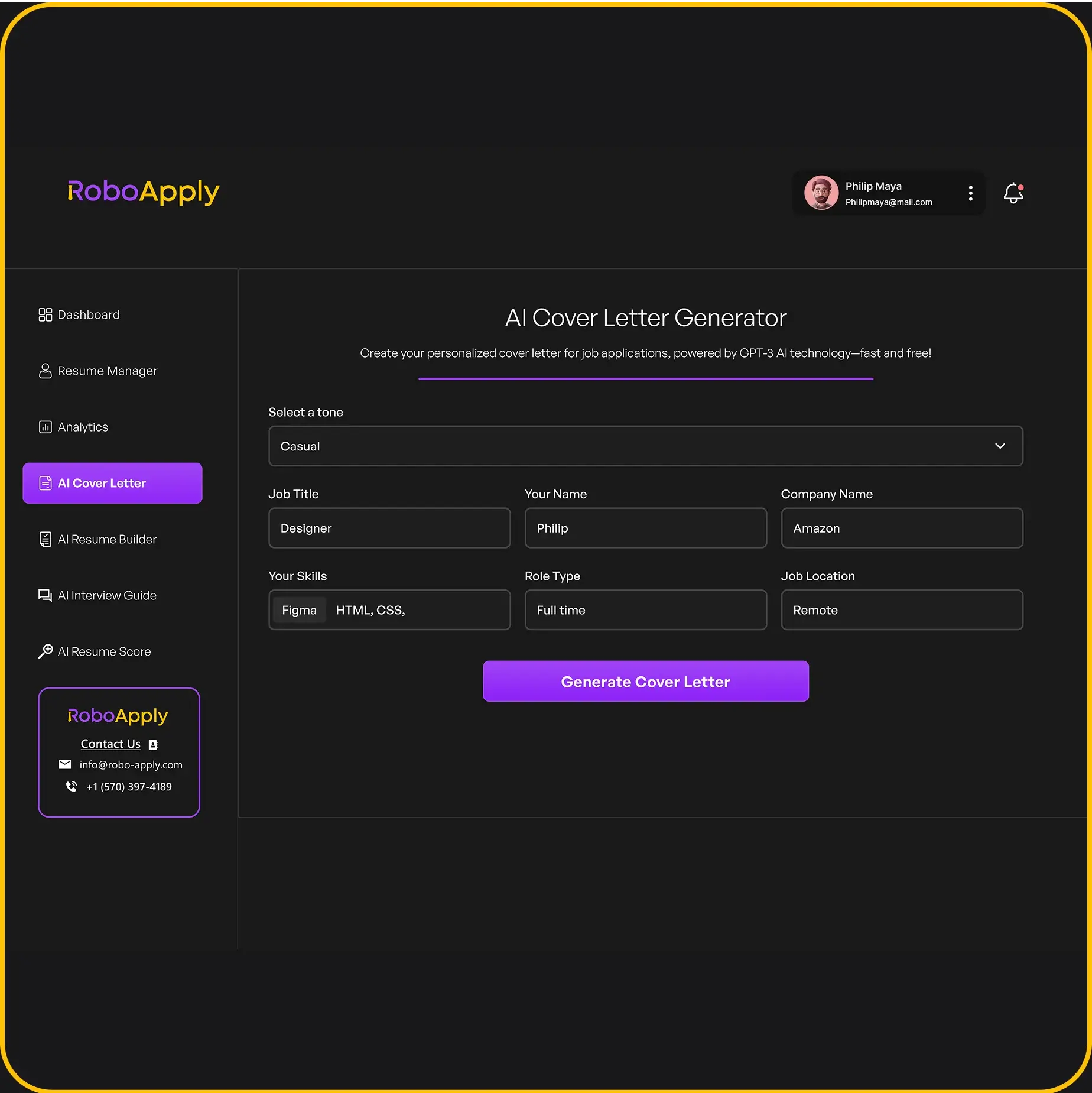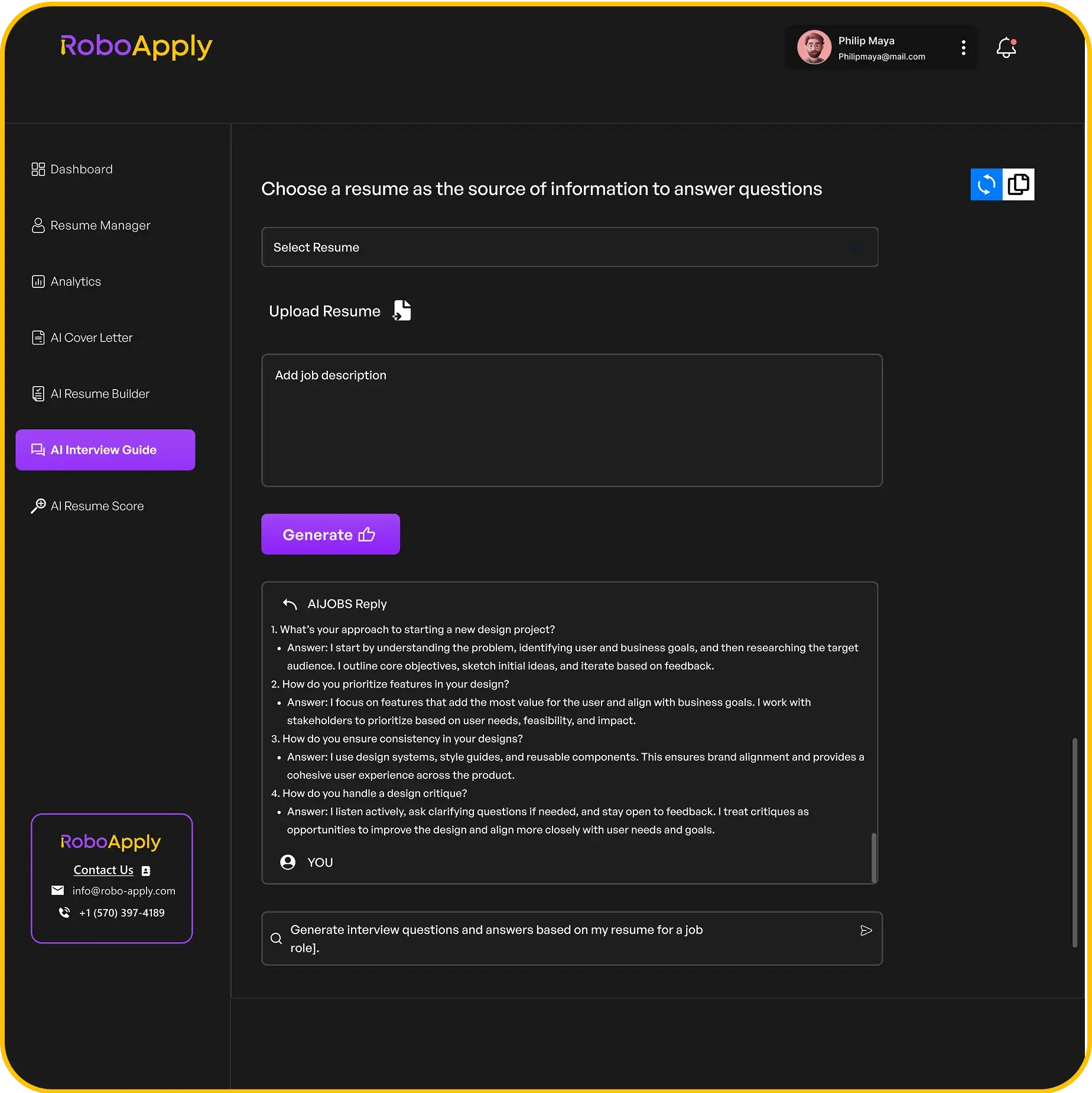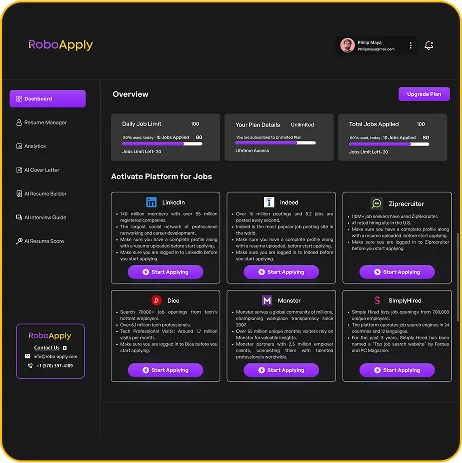So, you’re looking to land a job as an HR Analyst? That’s a smart move! Getting your resume just right can feel like a puzzle, but it doesn’t have to be. This guide will walk you through the important parts of your HR Analyst Resume, giving you clear examples and tips to make it stand out. We’ll cover everything from your summary to your skills, making sure you’re ready to impress. This article is powered by RoboApply, your go-to for resume help.
Key Takeaways
- Your resume summary should grab attention right away, highlighting your best skills and experiences.
- Always make sure your contact information is correct and easy to find.
- Show off your work experience with clear examples of what you did and the results you got.
- List your education simply, focusing on degrees and relevant coursework.
- Include a mix of technical and soft skills that are important for an HR Analyst role.
1. Resume Summary
A resume summary is your chance to make a strong first impression. It’s a brief overview of your qualifications and experience, tailored to the specific HR Analyst role you’re applying for. Think of it as your elevator pitch – a concise statement that grabs the reader’s attention and convinces them to keep reading. A well-crafted summary can significantly increase your chances of landing an interview. RoboApply can help you tailor your summary to match the job description, highlighting the most relevant skills and experience.
Your resume summary should showcase your most relevant skills and experience. It’s not just a generic overview; it’s a targeted statement that demonstrates why you’re the perfect fit for the job.
Here’s an example:
"Highly analytical and results-oriented HR Analyst with 5+ years of experience in data analysis, reporting, and HR process improvement. Proven ability to translate data into actionable insights that drive business decisions. Expertise in HRIS systems, compensation analysis, and talent management. Seeking to leverage expertise to improve organizational effectiveness."
Here are some tips for writing an effective resume summary:
- Keep it concise: Aim for 3-4 sentences.
- Highlight key skills: Focus on skills that are relevant to the job description.
- Quantify your achievements: Use numbers to demonstrate your impact.
- Tailor it to the job: Customize your summary for each application.
- Use strong action verbs: Start your sentences with verbs like "analyzed," "developed," or "implemented."
Think of your resume summary as a mini-advertisement for yourself. It’s your chance to showcase your value and convince the hiring manager that you’re worth interviewing. Make it count! It’s similar to what a medical office administrator resume would do, but tailored to HR.
2. Contact Information
Your contact information section is pretty straightforward, but it’s super important to get right. This is how recruiters will reach out to you, so accuracy is key. You don’t want any typos or outdated info here.
Make sure it’s easy to find and clearly formatted. RoboApply can help you ensure this section is error-free and professionally presented.
Here’s what you should include:
- Full Name: Use a professional format (e.g., John Smith, not Johnny Smith).
- Phone Number: Double-check for accuracy. Seriously, do it.
- Email Address: Use a professional-sounding email (no funny nicknames).
- LinkedIn Profile URL: A must-have in today’s job market. Make sure your profile is up-to-date.
- Location: City and state are usually sufficient. You don’t need to include your full street address for privacy reasons, as mentioned in this retail pharmacist resume guide.
It’s a good idea to keep your contact information consistent across all your job application materials. This includes your resume, cover letter, and online profiles. Consistency builds trust and makes it easier for recruiters to find you.
Here’s an example:
John Smith
(555) 123-4567
john.smith@email.com
linkedin.com/in/johnsmith
New York, NY
Make sure your contact information is clear and easy to read. A well-formatted resume, like those in these secretary resume examples, makes a difference.
3. Work Experience
Your work experience section is where you really show what you can do. It’s not just about listing your past jobs; it’s about highlighting your accomplishments and how they benefited your previous employers. Think of it as your chance to prove you’re not just qualified, but also a valuable asset. RoboApply can help you tailor this section to match the specific requirements of each job you apply for, making sure your most relevant experience shines.
- Quantify your achievements whenever possible. Use numbers to show the impact you made. For example, instead of saying "Improved employee satisfaction," say "Improved employee satisfaction scores by 15% in six months."
- Use action verbs to start each bullet point. This makes your descriptions more dynamic and engaging. Think "Managed," "Developed," "Implemented," and "Analyzed."
- Tailor your descriptions to match the job description. Focus on the skills and experiences that are most relevant to the position you’re applying for. This shows you understand what the employer is looking for and that you’re a good fit.
Remember to focus on the results you achieved, not just the tasks you performed. Employers want to know how you made a difference.
Here’s an example of how to format your work experience section:
HR Analyst | ABC Company | June 2022 – Present
- Managed the full employee lifecycle, including onboarding, offboarding, and performance management for 200+ employees.
- Developed and implemented a new employee training program that reduced employee turnover by 10% within the first year. human resources resume examples
- Analyzed HR data to identify trends and make recommendations for improvement, resulting in a 5% increase in employee engagement.
- Collaborated with department managers to address employee relations issues and ensure compliance with company policies and procedures.
HR Coordinator | XYZ Corporation | January 2020 – June 2022
- Provided administrative support to the HR department, including managing employee records, processing payroll, and scheduling interviews.
- Assisted with the recruitment process, including posting job openings, screening resumes, and conducting initial phone interviews.
- Coordinated employee events and activities, such as company picnics and holiday parties.
- Maintained accurate and up-to-date employee records in compliance with company policies and legal requirements.
Remember to adjust this template to fit your own experience and the specific requirements of the job you’re applying for. Good luck!
4. Education

Your education section is where you list your academic achievements. It’s pretty straightforward, but there are a few things to keep in mind, especially if you’re trying to land that HR Analyst role. RoboApply can help you tailor this section to match job descriptions, making sure you highlight the most relevant coursework and skills.
Education Details
- List your degrees in reverse chronological order. Start with your most recent degree and work your way back. This is standard practice for resumes.
- Include the full name of the degree, the name of the institution, and your graduation date (or expected graduation date). Don’t abbreviate unless you absolutely have to, and if you do, be consistent.
- If your GPA is above 3.5, include it. If it’s lower, leave it off. No need to draw attention to something that might not help your case.
Consider adding relevant coursework or specializations if they directly relate to the HR Analyst position. For example, if you took courses in statistics, organizational behavior, or HR management, definitely include those. This shows you have a solid foundation for the job.
Example
Here’s how you might format your education section:
Example 1:
Master of Science in Human Resources Management
University of Example, Exampleville, ST
May 2023
Bachelor of Arts in Psychology
State Example University, Exampletown, ST
May 2021
Example 2:
Bachelor of Science in Business Administration
(Concentration: Human Resources)
Example College, Example City, ST
May 2024
GPA: 3.8
Tips for HR Analyst Education Sections
- Tailor your education section to the specific job description. If the job emphasizes data analysis, highlight any coursework or projects that involved data. RoboApply can help identify these keywords.
- If you have certifications (we’ll cover those later), you can sometimes include them here if they’re closely tied to your degree. For example, if you earned a SHRM certification during your HR program, you could mention it.
- If you’re a recent graduate, you can include relevant extracurricular activities or honors. Did you lead the HR club? Did you receive any academic awards? These can help fill out your resume if you don’t have much work experience. Make sure your resume examples and guide are up to par.
- Don’t include your high school education if you have a college degree. It’s assumed you graduated high school, so it’s just taking up space. Focus on your higher education achievements.
What if You Don’t Have a Directly Related Degree?
Not everyone has a degree in HR. That’s okay! If your degree is in a related field (like business, psychology, or sociology), you can still make it work. The key is to highlight the skills and knowledge you gained that are transferable to an HR Analyst role. For example, if you have a degree in psychology, you can emphasize your understanding of human behavior and motivation. If you have a degree in business, you can highlight your analytical and problem-solving skills. Just make sure to connect the dots for the hiring manager. You can also use a functional or combination resume format to de-emphasize your lack of direct experience and focus on your skills. Remember to use ATS-friendly HR Analyst resume samples to make sure your resume is seen.
5. Skills
Your skills section is where you show off what you’re good at. It’s not just about listing things; it’s about showing you have the right stuff for the job. Think about what the job description asks for and make sure those skills are front and center. RoboApply can help you tailor your skills section to match specific job requirements, making your resume more appealing to recruiters.
Hard Skills
These are the technical abilities you’ve gained through training or experience. For an HR Analyst, hard skills might include data analysis, HRIS software proficiency, and reporting.
- Data Analysis: Being able to collect, analyze, and interpret data to make informed decisions. For example, analyzing employee turnover rates to identify trends and recommend solutions.
- HRIS Software: Experience with systems like Workday, SAP SuccessFactors, or Oracle HCM. Knowing how to use these systems for tasks like payroll, benefits administration, and performance management is super important. HRIS systems are a must.
- Reporting: Creating clear and concise reports to communicate HR metrics and insights to stakeholders. This could include monthly reports on employee demographics or quarterly reports on training effectiveness.
Soft Skills
Soft skills are your interpersonal abilities – how you interact with others. These are just as important as your technical skills.
- Communication: Being able to clearly and effectively communicate with employees, managers, and other stakeholders. This includes both written and verbal communication.
- Problem-Solving: Identifying and resolving HR-related issues, such as employee conflicts or compliance concerns. It’s about finding solutions that work for everyone involved.
- Attention to Detail: Ensuring accuracy in HR processes, such as payroll, benefits administration, and compliance reporting. Small errors can have big consequences, so attention to detail is key. Key HR skills are important.
A good way to showcase your skills is to provide specific examples of how you’ve used them in previous roles. Instead of just saying "Data Analysis," say "Analyzed employee turnover data to identify trends and recommend strategies to reduce turnover by 15%."
Technical Skills
These are specific tools and technologies you know how to use. Make sure to list the ones that are relevant to the HR Analyst role.
- Excel: Advanced proficiency in Excel, including using formulas, pivot tables, and charts to analyze data.
- PowerPoint: Creating presentations to communicate HR metrics and insights to stakeholders. Being able to present data in a clear and engaging way is a valuable skill.
- Statistical Software: Experience with statistical software like SPSS or SAS for more advanced data analysis. This is especially useful if you’re working with large datasets or conducting research. Financial controller resume is a good example of how to list technical skills.
6. Certifications

Having certifications on your resume can really make you stand out. It shows you’re serious about the field and have taken the time to learn and get validated. Plus, some companies might even require specific certs for certain roles. RoboApply can help you tailor your resume to highlight these certifications, making sure they catch the eye of recruiters.
It’s all about showing you’ve got the skills and knowledge to back up your claims.
Here are some certifications that can boost your HR analyst resume:
- SHRM-CP or SHRM-SCP: These are pretty popular, showing you know your stuff when it comes to HR practices and strategy. SHRM People Analytics is a great way to get started.
- HRCI Certifications (aPHR, PHR, SPHR, GPHR): HRCI offers a range of certifications depending on your experience level. They’re well-recognized and respected in the HR world.
- Certified Compensation Professional (CCP): If you’re into compensation and benefits, this one’s a good choice. It shows you understand how to design and manage compensation programs.
- Certified Benefits Professional (CBP): Similar to CCP, but focuses specifically on benefits. Good if you want to specialize in that area.
- Professional in Human Resources Analytics (PHRA): This certification focuses specifically on HR analytics, covering topics like data analysis, metrics, and reporting. It’s becoming increasingly valuable as HR becomes more data-driven.
- AIHR Analytics Specialist: This is a more specialized certification that focuses on using data to make better HR decisions. It covers topics like HR metrics, data visualization, and statistical analysis.
Getting certified isn’t just about adding letters after your name. It’s about investing in yourself and your career. It shows you’re committed to staying up-to-date with the latest trends and best practices in HR. Plus, it can give you a competitive edge in the job market.
Consider these points when listing certifications:
- List the full name of the certification: Don’t use abbreviations unless you also include the full name. For example, "Senior Professional in Human Resources (SPHR)."
- Include the issuing organization: Specify who gave you the certification (e.g., HRCI, SHRM).
- Mention the date of certification and expiration date: If it’s still valid, great. If it’s expired, you might want to consider renewing it, or at least indicate the period it was valid.
- Put it in its own section: Make it easy for recruiters to find. A dedicated "Certifications" section is ideal.
Here’s an example of how to list a certification:
Senior Professional in Human Resources (SPHR) – HR Certification Institute (HRCI) – Certified: June 2020, Expires: June 2026
Or:
Professional in Human Resources (PHR) – HRCI – Valid 2018 – 2024
If you’re looking to expand your knowledge, FutureLearn provides online courses that can help you prepare for these certifications. They have courses from top universities and institutions, so you can learn from the best. Also, remember to tailor your resume using RoboApply to highlight the certifications that are most relevant to the jobs you’re applying for. This will help you stand out from the competition and show employers that you have the skills and knowledge they’re looking for.
7. Projects

Projects are a great way to show off what you can do, especially if you’re light on traditional work experience. Think of them as mini case studies that highlight your skills and initiative. They’re also a good way to demonstrate your analytical abilities resume samples outside of a formal job setting.
Here’s the thing: HR projects don’t always have flashy results. Sometimes, it’s about improving a process or finding a better way to track data. The key is to show how you identified a problem, what steps you took to solve it, and what the outcome was. RoboApply can help you tailor your project descriptions to match the keywords in the job description, making sure your efforts get noticed.
Here are some ideas for HR analyst projects you could include:
- Employee Turnover Analysis: Conducted an analysis of employee turnover data to identify key drivers and recommend strategies for retention. This could involve analyzing exit interview data, performance reviews, and demographic information to pinpoint trends and patterns.
- Compensation Benchmarking: Researched and compared compensation data for similar roles in the industry to ensure competitive pay rates. This might involve using salary surveys, online databases, and networking with other HR professionals.
- HRIS Implementation: Assisted with the implementation of a new Human Resources Information System (HRIS), including data migration, system configuration, and user training. This demonstrates your technical skills and ability to manage complex projects.
Projects are a fantastic way to showcase your skills and initiative, especially if you’re looking to break into the HR field or transition to a more analytical role. They allow you to demonstrate your abilities in a tangible way and provide concrete examples of your problem-solving skills.
Think about projects you’ve done in school, volunteer work, or even personal projects that relate to HR. Did you organize a training program? Did you analyze survey data? Did you help streamline a hiring process? These are all potential projects you can include on your resume. Use a resume builder to make sure your projects are formatted correctly.
Remember to quantify your results whenever possible. Instead of saying "Improved employee engagement," say "Increased employee engagement scores by 15% through targeted initiatives." Numbers speak louder than words and help demonstrate the impact of your work. You can also use RoboApply to help you identify the most relevant keywords and phrases to include in your project descriptions, making sure your resume gets past the applicant tracking system (ATS) and into the hands of a human recruiter. Don’t forget to use action verbs to describe your responsibilities and accomplishments. For example, instead of saying "Responsible for data analysis," say "Conducted data analysis to identify trends and patterns."
8. Awards

Awards can really make your resume stand out, especially if they’re related to HR or analytics. They show you’ve gone above and beyond, and that your work has been recognized. If you’ve got any, definitely include them!
RoboApply can help you tailor your resume to highlight these achievements, making sure they catch the eye of recruiters.
Here’s how you might list them:
- Award Name: HR Excellence Award
- Awarding Organization: Society for Human Resource Management (SHRM)
- Date Received: June 2024
- Brief Description: Recognized for outstanding contributions to employee engagement and retention initiatives.
Or maybe something like this:
- Award Name: Data Analytics Star
- Awarding Organization: Internal Company Award
- Date Received: December 2023
- Brief Description: Acknowledged for developing a predictive model that reduced employee turnover by 15%.
It’s a good idea to keep the descriptions concise but impactful. Focus on what you achieved and how it benefited the organization. Quantifiable results are always a plus!
Don’t have any awards? No worries! Focus on your skills, experience, and projects. Awards are great, but they’re not the only thing that matters. RoboApply can help you showcase your other strengths effectively.
9. Publications
While not always applicable, including publications can significantly boost your HR analyst resume, especially if you’re targeting roles in research-heavy or academic environments. It shows you’re not just doing the work, but also contributing to the broader knowledge base of the field. RoboApply can help tailor your resume to highlight these achievements.
Listing publications demonstrates your expertise and commitment to the HR field.
Here’s how you might format this section:
- Title of Publication: "The Impact of Remote Work on Employee Engagement"
- Title of Publication: "Diversity and Inclusion Metrics: A Practical Guide"
- Title of Publication: "The Future of HR Analytics: Trends and Predictions"
Including a brief summary helps the reader quickly understand the relevance of your publications. Make sure to tailor these summaries to match the specific requirements of the job you’re applying for.
Consider these points when adding publications:
- Relevance: Only include publications directly related to HR or analytics.
- Format: Use a consistent citation style (APA, MLA, etc.).
- Accessibility: If possible, provide a link to the publication or a repository where it can be accessed. This shows your professional experience and credibility.
If you don’t have formal publications, consider including blog posts, articles on LinkedIn, or presentations you’ve given at industry events. These can still showcase your knowledge and expertise. Make sure your resume is ATS-friendly to bypass Applicant Tracking Systems and get noticed.
Want to see more of our work? We’ve put together a bunch of cool stuff, from articles to guides, that can help you out. Check out our website to learn more and find what you need!
Conclusion
So, there you have it. Getting your HR analyst resume just right can feel like a big job, but it’s totally doable. Think about what you’ve done, even if it seems small, and how it connects to what companies want. Show them you can work with data and help people. Keep it clear, keep it simple, and make sure it shows off your best stuff. You’ve got this.
Frequently Asked Questions
What exactly does an HR Analyst do?
A human resources (HR) analyst helps a company by looking at data about its workers. They figure out things like why people leave, what makes them happy, and how to make the workplace better. They use numbers and facts to give advice to bosses.
What are the most important parts of an HR Analyst resume?
You should put your best stuff first! Your summary, work history, and skills are super important. These are the parts that will make a hiring manager want to keep reading your resume.
Should I include personal projects on my HR Analyst resume?
Yes, you totally should! Even if it’s not a big fancy project, showing you can use data or solve problems related to people can really help. It shows you know how to do the job.
Can tools like RoboApply help me write my resume?
For sure! Tools like RoboApply can help you make your resume look good and catch mistakes. They can also help you make sure your resume has the right words that companies are looking for.
How long should an HR Analyst resume be?
It’s a good idea to keep your resume to one page if you’re just starting out or have less than 10 years of experience. If you have a lot more experience, two pages can be okay, but make sure every word counts!
Do I need a different resume for every job application?
You should always change your resume a little bit for each job you apply for. Look at the job ad and use some of the same words they use. This helps your resume get noticed by computer systems and people.
How can I make my work experience sound stronger?
Focus on what you did and the good results you got. Instead of just saying ‘managed data,’ say ‘managed employee data, which helped reduce hiring time by 15%.’ Use numbers to show your success!
Are certifications important for an HR Analyst?
Yes, they are very helpful! Certifications show that you’ve learned extra skills, like how to use special software or understand HR rules. This can make you stand out from other people applying for the job.







